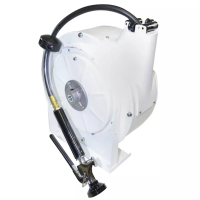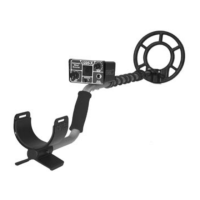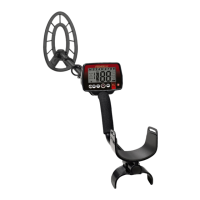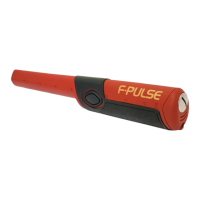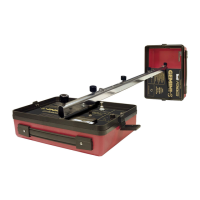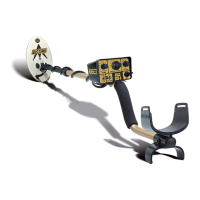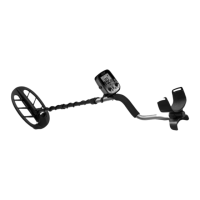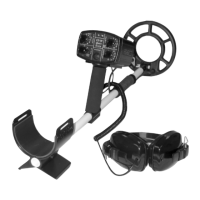14
15
PLUGGING METHOD
This method of recovery is not allowed in many areas and should
never be used in dry lawns or in very hot weather. A good rule of
thumb is... “When in doubt, don’t plug”. It’s a good way to recover
deep targets however in moist soil where plugging is allowed and
when done properly.
1. Once your target has been pinpointed, lay the 1280-
X down (still turned on) so that the searchcoil is within
easy reach but not close enough to detect your digging
tool.
2. Cut a cone shaped plug about 3 inches in diameter
and at least 3 inches deep.
NOTE: If you’re in a park or lawn maintained by a power
mower, don’t cut a cone - the mower may pull it back
up. Instead cut a deep, square, un-pointed plug.
3. Remove the plug, being careful not to scatter loose
dirt.
4. Examine the plug and the hole for your target.
5. If the target is not readily visible, pass the plug across the
front or back of the searchcoil. If the target is in the plug,
you will get an immediate response from the 1280-X.
NOTE: This procedure will be successful only if:
a. You have removed any rings, watches, etc.
b. The DISCRIMINATION level is low enough to detect
your target.
c. You move the plug as close as possible across the
searchcoil.
6. If the target is in the plug, carefully dissect the plug until
you have recovered it. Try not to damage roots or disturb
the surface of the plug.
7. If the target is not in the plug, check the dirt in and
around the hole.
8. Recheck the hole and the area around the hole with
TARGET RECOVERY
inserting the screwdriver into the ground next to the hole
and pulling in towards the center. Do this 4 to 5 times
around the edge of the hole until it is no longer visible.
RECOVERY TOOLS
1. Sandscoops designed especially for beachcombers and
shallow water treasure hunters are available at many
metal detector outlets.
2. Divers use a variety of recovery tools depending on
the condition of the sea bed or lake bottom. A sturdy
dive knife will sufce in packed mud or small rocks.
Most divers prefer to use their hands in loose sand and
professional treasure hunters often use an air hose fed by
a surface compressor to blow away loose sand, gravel
or mud.
3. For land recovery, a sturdy hunting knife with a 5” blade
will sufce in most soils. A high quality, double edged
“survival” knife is an even better choice (and more
expensive) since it will be almost impossible to bend or
break.
CAUTION: Using a jack knife without a locking blade is
a good way to lose a nger.
4. A heavy duty, blunt screwdriver is commonly used
for shallow targets where digging or “plugging” is
objectionable.
your 1280-X if you still can’t nd it.
9. Once you have recovered the target, check the area
again. Two or more coins are often found in the same
spot.
10. Scrape all loose dirt back in the hole, reinsert the plug
and press it rmly in place with your foot.
TARGET RECOVERY
1280Xmanual-8702460000-2014.indd 14 1/5/15 3:52 PM
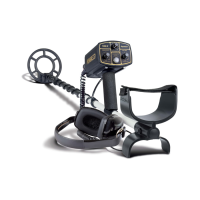
